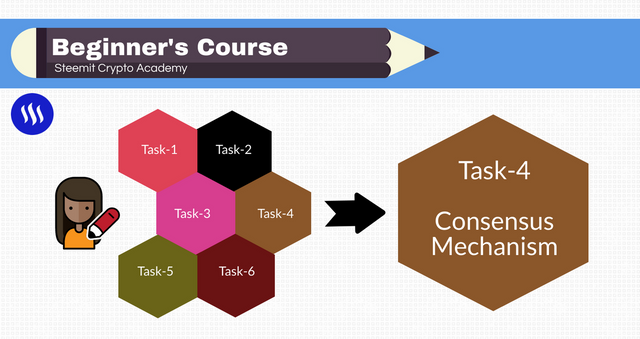(1) What is the difference between PoW & PoS? Advantages & Disadvantages? Which one is better in scaling capacity? Examples?
Proof of work is a consensus mechanism used in blockchain technology. PoW miners in the blockchain network prove their efforts towards the development of that network by validating and completing blocks by solving difficult mathematical puzzles with the use of their computation power. It also ensures that the network is free from hackers and it is a consensus mechanism BTC currently uses.
In Proof of Stake (PoS), consensus is reached by staking with the coins they already have in a particular network instead of solving mathematical puzzles with computing power. It was created as an alternative to PoW, and this consensus algorithm is used by networks such as STEEM and others.
| Miners solve complex mathematical puzzles in each block in a form of competition with their computational power. | Little or no competition as they have an algorithm that chooses the block creator according to the users' stake. |
| It utilizes a greater amount of computation power through the mining process. | The amount of coins held by users determines the validity of a new block. |
| Have a designated hardware to control the processing power. | Anyone can be involved if they have an internet connection. |
| Less scalable, can complete 10 transactions per second by default. | More scalable, can scale more than 1000 transactions per second by default. |
| More electrical energy consumption because of the mining process. | Less electrical energy consumption. |
• Networks using PoW are more decentralized
• Because of the advanced competition among miners in networking to solve mathematical puzzles for validation, there is fairness in the PoW.
• PoW is very difficult for hackers to take control over the network.
• PoW is less scalable
• It is only available to people who have a mining setup.
• It requires experience and expertise
• It also consumes more energy in the blockchain validation process.
• It is more energy efficient.
• Users need to build their reputation to increase their staking power.
• People with less experience or expertise in the network can participate in the staking process.
• Less secure when compared to PoW
• Existence of a monopoly on staking. Thus, those who have enough money to buy coins to stake have a higher reputation in the network than those without enough money.
Apart from PoW, where winners get rewards and any other person does not. Each stake basically ensures a prize to increase investment in PoS. PoS scales more effectively with the fact that current holders stake their own coins to work with transactions as opposed to mining them.
As the prizes depend on the coins staked, stalkers justifiably acquire more rewards. Little stalkers can manage to procure compensation. Hence, there isn't sufficient ability to deal with rising trade volumes.
Numerous individuals flood in with stakes as the reward diminishes. In this case, the demand for coins develops until there is an excessive amount of supply while the price decreases.
With PoW, the higher the coins become, the more complicated the puzzles will become, which they find difficult to solve, hence decreasing their availability, which also explains why PoS has a greater scalability capacity than PoW.
BTC and Etherium are examples of coins that use PoW.
STEEM, NXT, and NEO are examples of coins that use PoS.
